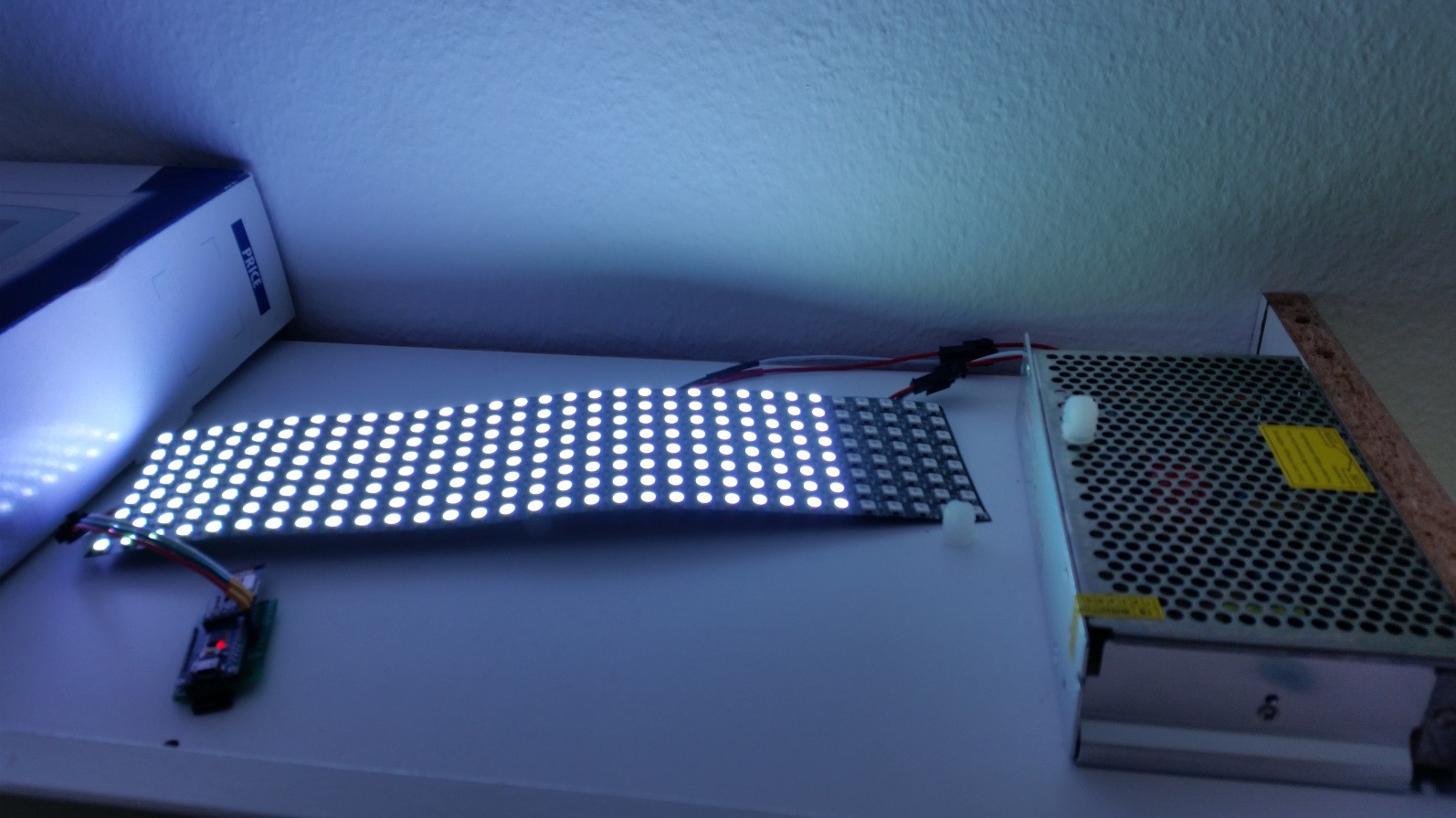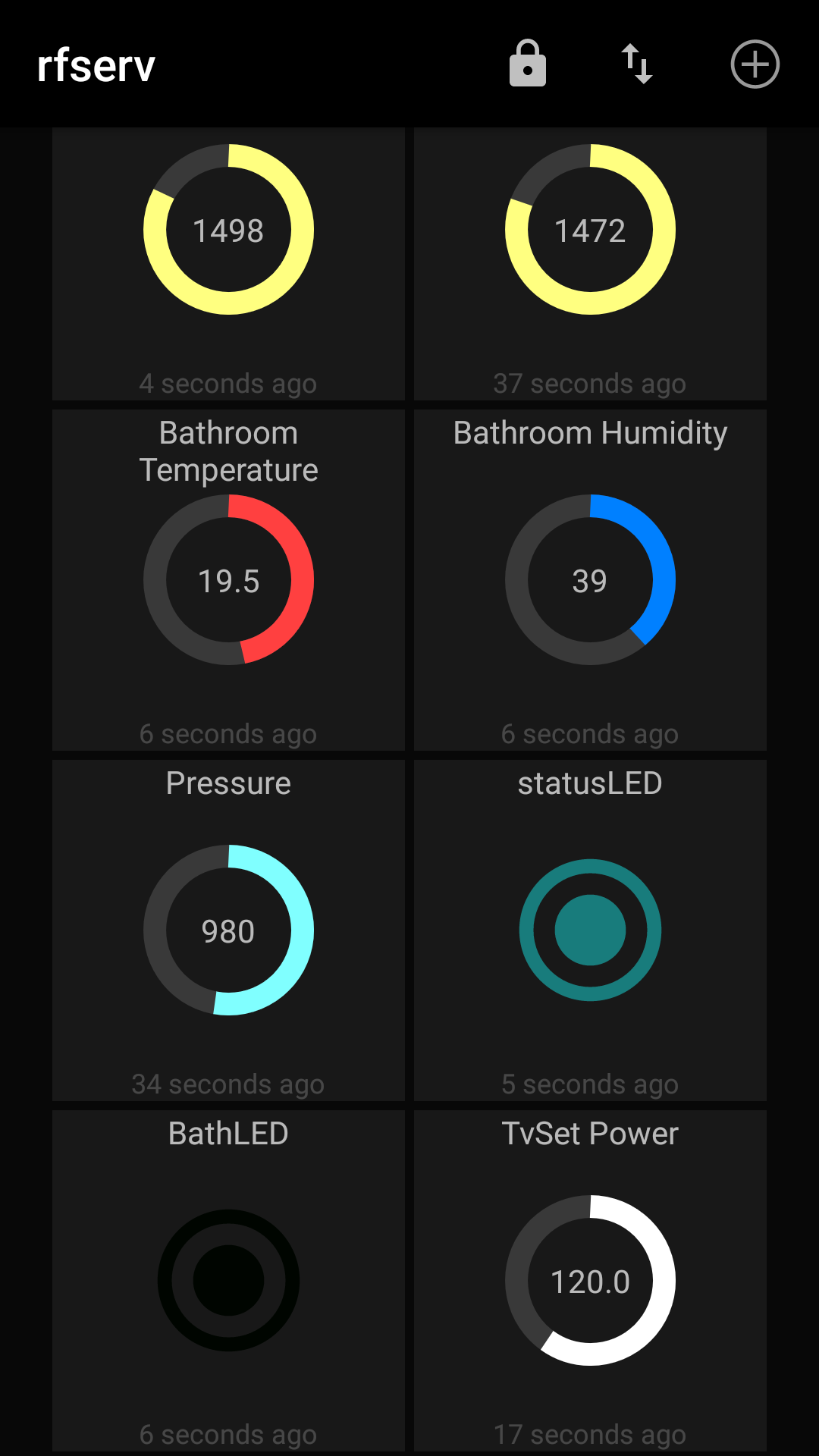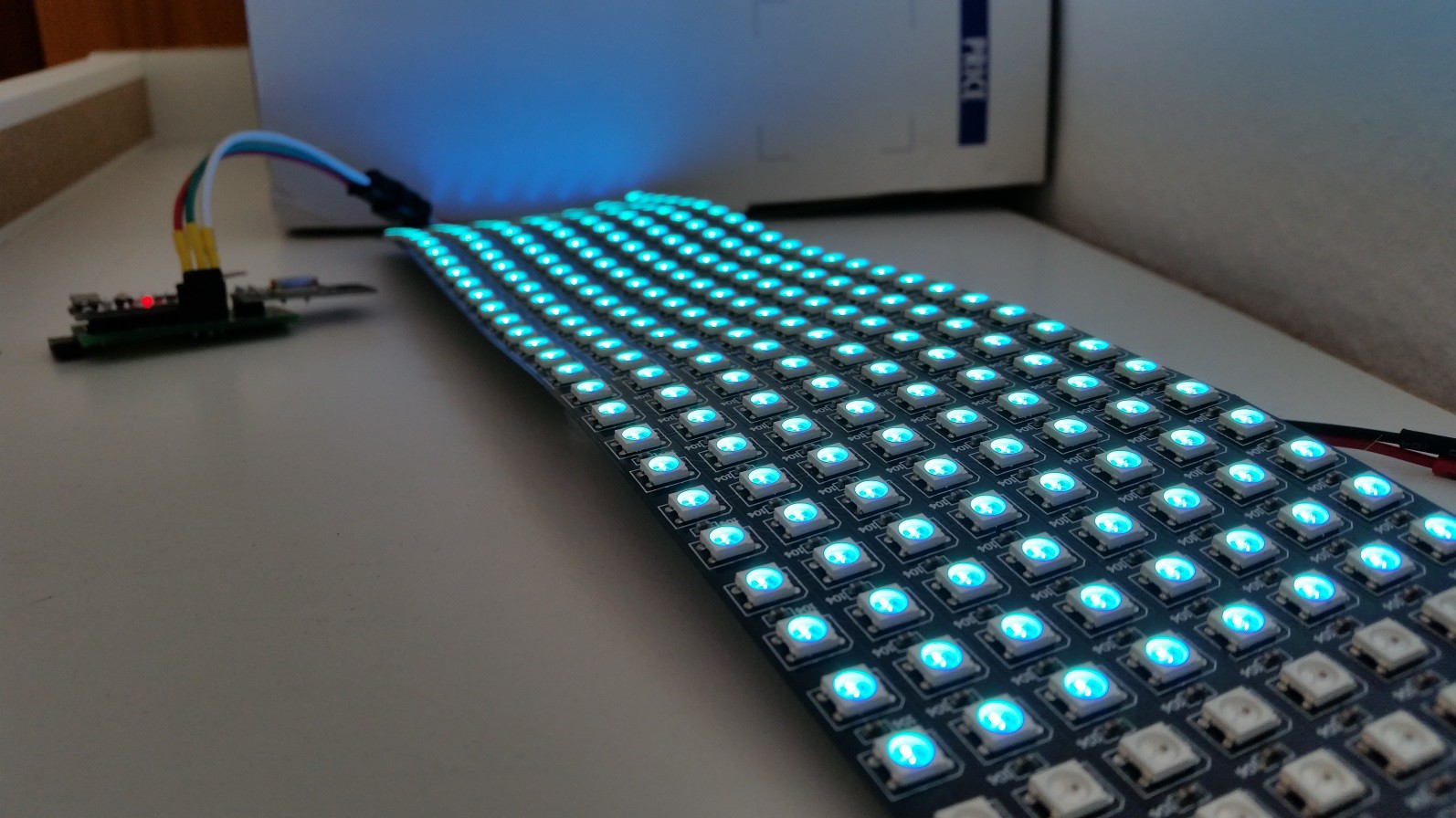Demo
- This demo is just a picture where the RGB Panel is switched on next to its STM8S_RF_Dongle which is here an RF to WS2812B converter.

How is this working ?
- The STM8 firmware to control the WS2812B has already been presented in this Log and the LED series up to 60 here
- Here we push the number of LEDs up to x216, it could go up to x220 but then it would not be aligned any more. The panel offer up to x256 LEDs but the STM8S memory of 1KB reaches its limit here. For a single color I could simply rework the function to lightup an unlimited number of WS2812B, but we would then loose the option of displaying figures or messages.
- Every WS2812B consumes up to 60 mA, so for 256 LEDs that's no kidding 15 Amps !!!! Thus the transformer next to it can go up to 20 Amps !! note that this might be dangerous if you use less powerful transformers !! From safety perspective, I'm currently using a manual switch in addition, I would not recommend such an installation without a relay that fully cuts out the current when not in use!!!!
- The radio protocol is very simple and provided in the libraries through the WS2812B.c it looks like this :
PID - NodeID - R - G - B - CRCMQTT Control
For convenience here, I used a ready Android application MQTT Dash which worked out of the box once I used the topic payload format for colors which is the #RRGGBB (e.g #FFFFFF for white). It is enough to program the right topic address (e.g. Nodes/10/RGB), this app is cool as it even provides colors pickers.

By the way, we can see here a TVSet Power as well which is an off the shelf Wemo switch connected through OpenHAB2 and MQTT.
Conclusion
If you need just brighter light for your room, do not use this Panel which is more valuable than that, I plan to shit it to a central messaging notifiers and use it to display text and symbols.

 Wassim
Wassim
Discussions
Become a Hackaday.io Member
Create an account to leave a comment. Already have an account? Log In.